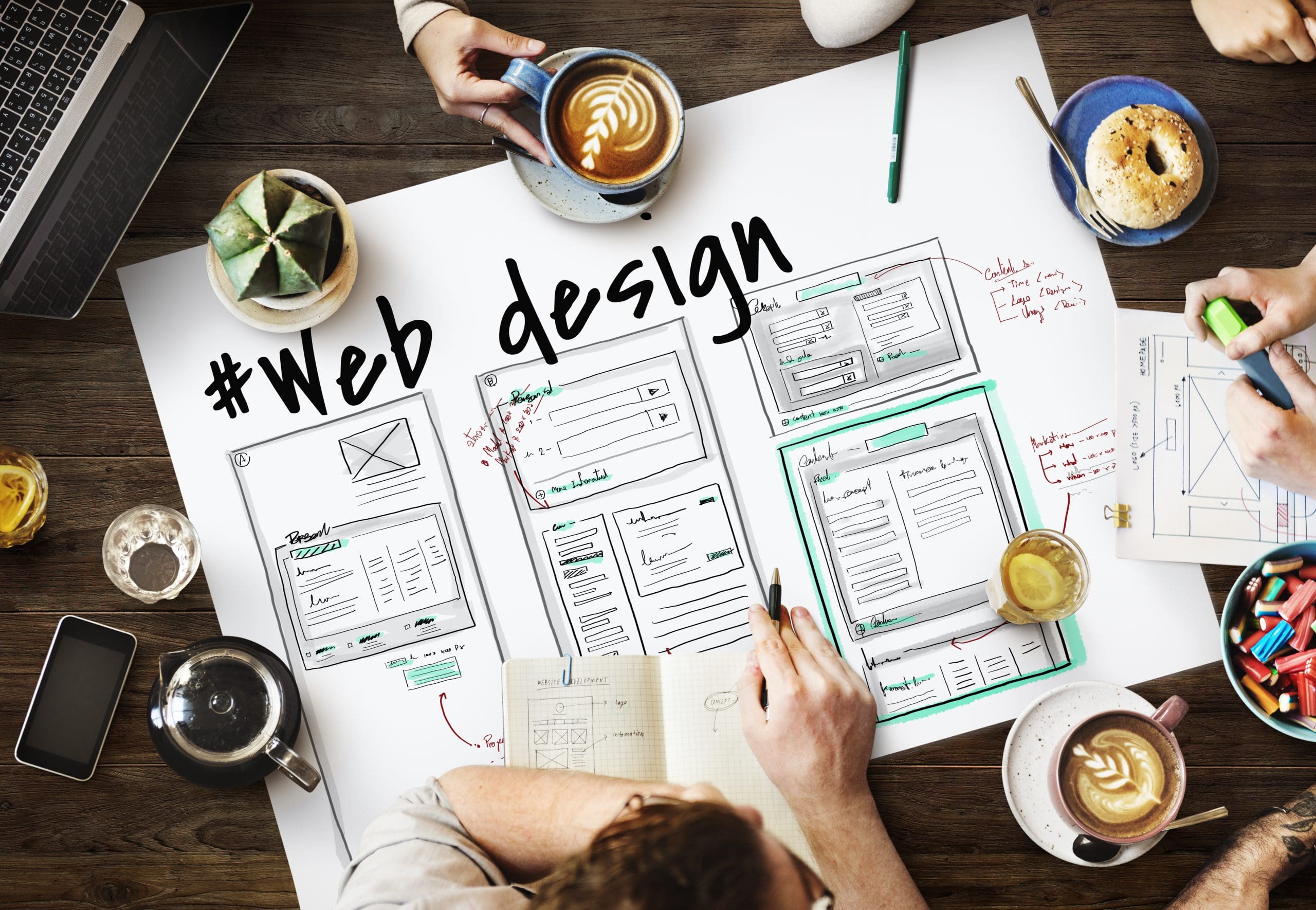Web Design London Ontario That Increases Online Engagement
Web Design London Ontario That Increases Online Engagement
Blog Article
How to Successfully Incorporate Looks and Performance in Website Design
When making a web site, you need to strike an equilibrium in between aesthetic appeals and performance. It's not almost looking great; your design needs to additionally serve a purpose and guide users efficiently. By focusing on simpleness and user-friendly navigating, you can create an appealing experience. But what elements genuinely improve use while keeping visual appeal? Let's explore the crucial principles that can result in a harmonious mix of elegance and function.
Recognizing the Importance of Appearances and Performance
Understanding the balance in between aesthetics and performance is vital for creating an effective customer experience when you create a site. A visually enticing website grabs attention, yet it's the performance that keeps individuals engaged. If your website looks excellent but is difficult to browse, visitors will promptly weary and leave.Consider your target market and what draws them in. You desire to create a style that mirrors your brand while making certain simplicity of usage. Streamlined formats, intuitive navigating, and clear contact us to activity can enhance both looks and functionality.

Concepts of Effective Internet Design
To develop an efficient web style, you need to follow a number of key concepts that enhance both customer experience and visual allure. Prioritize simpleness; a clean design helps customers navigate quickly. Make use of a constant shade plan and typography to maintain coherence throughout your site. This promotes knowledge and trust.Next, guarantee your layout is responsive. Individuals accessibility websites on different tools, so your design must adjust perfectly. Focus on visual pecking order; emphasize important aspects with placement, dimension, or color to lead users' focus.Finally, incorporate sufficient white area. It protects against clutter and makes content much more absorbable. Bear in mind, effective web style equilibriums appearances and functionality, so every style choice need to offer a purpose. By adhering to these concepts, you'll develop a website that's not just aesthetically attractive yet additionally easy to use, inevitably keeping visitors engaged and motivating them to return.
Prioritizing Customer Experience
When prioritizing customer experience, you'll intend to begin by recognizing what your individuals truly need. Simplifying navigating layout can make a big distinction in how conveniently they find what they're seeking. Enhancing aesthetic hierarchy assists direct their attention to the most vital aspects on your site.
Understanding Customer Requirements
Comprehending user demands is crucial for producing an engaging internet experience that maintains visitors returning. To accomplish this, you must determine the objectives and preferences of your target market. Start by conducting individual study, like surveys or meetings, to gather insights on what customers value most. When connecting with similar web sites, pay focus to their pain factors and obstacles. This information enables you to customize your design, guaranteeing capability aligns with customer expectations. Additionally, consider producing user characters that represent various segments of your target market, helping you picture their demands during the style process. When you focus on recognizing customer needs, you create a website that not just looks fantastic but additionally supplies a smooth, satisfying experience that promotes commitment.
Streamlining Navigating Design

Enhancing Visual Power Structure
A solid visual hierarchy is important in directing users via your internet site and guaranteeing they involve with vital material. To accomplish this, make use of spacing, size, and color strategically. Make important components like headings bigger and bolder than body message, attracting focus quickly. Utilize contrasting colors to highlight phone calls to action, motivating clicks. Additionally, utilize enough white area to separate areas, making content digestible and inviting.Consider the circulation of information; prepare elements logically, leading customers' eyes from one indicate the following. Use visual hints, like arrowheads or lines, to route attention. By focusing on aesthetic pecking order, you improve customer experience and raise the probability of conversions, guaranteeing your website is both aesthetically pleasing and functionally effective.
Color Concept and Its Effect On Functionality
While picking the best shades for your website may look like a small detail, it substantially influences functionality and customer experience. Color influences how customers view details and can prevent or boost navigation. For example, contrasting colors can aid important aspects attract attention, making it simpler for site visitors to find what they need.Additionally, take into consideration the psychology of shades: blue typically motivates trust fund, while red develops urgency. Understanding your target market can guide your color options, ensuring they resonate well.Moreover, constant color plans aid construct brand name identification, making your website more memorable. However, be cautious-- way here too many colors can overwhelm customers. Adhere to a minimal scheme that enhances your material and preserves clarity.Incorporating accessibility is also essential; verify your shade combinations are friendly for those with visual impairments. By thoughtfully using shade theory, you'll enhance usability and develop a much more interesting individual experience.
Typography: Balancing Design and Readability
Shade choices established the phase for your site, but typography plays an equally essential duty in boosting customer experience. You want your text to connect clearly while likewise showing your brand name's personality. Start by picking typefaces that are not only attractive yet likewise legible. Sans-serif typefaces commonly work well for digital displays, as they're simpler to review at different sizes.Maintain a hierarchy by utilizing different font dimensions and weights; this guides customers with your web content effortlessly. Take into consideration line spacing and letter spacing; as well tight can annoy visitors, while also loose can interfere with the flow. Limit your typeface options to 2 or three to maintain the layout cohesive.Finally, always check your typography across various devices and internet browsers. What looks good on one display might not on one more. Balancing style with readability warranties that your message resonates, keeping your target market engaged and notified.
Responsive Layout: Making Aesthetics Service All Instruments
To guarantee your web site looks fantastic on any kind of tool, you'll need to accept receptive layout principles. This method warranties your website adapts to various screen sizes, supplying an ideal user experience. Begin by making use of fluid grids and versatile pictures that scale flawlessly. As opposed to fixed dimensions, go with percents and loved one units, allowing your layout to adjust dynamically.Next, execute media inquiries in your CSS. These allow you use various designs based upon tool features, like display size. In this manner, you can maintain aesthetic appeal while guaranteeing functionality.Don' t forget touch targets; make sure switches and web links are easy to touch on smaller sized screens. Focus on crucial material, so users can easily browse your site no matter of their device. By concentrating on these components, you'll develop an engaging, visually appealing experience that fulfills the demands of all individuals, whether they're on a desktop computer, tablet computer, or smart device.
Conducting Functionality Testing for Constant Improvement
To enhance your website design, you need to establish clear usability objectives that line up with user requirements. By performing customer examinations, you can gather valuable responses on how real individuals engage with your site. Examining these results will certainly help you make educated improvements and create a much more reliable customer experience.
Specifying Usability Goals
While looks can draw customers in, specifying functionality goals is important for ensuring their experience continues to be enjoyable and smooth. Beginning by identifying what you want users to accomplish on your website (website design london Ontario). Consider their habits, tasks, and requirements. Are they seeking information, purchasing, or enrolling in an e-newsletter? Develop clear standards to determine success, like task conclusion rates or time on task. Focus on instinctive navigation, accessible material, and responsive style to enhance use. Consistently revisit these goals as individual expectations develop. By defining use objectives, you develop a structure for assessing and boosting your site's performance. This emphasis on use not only boosts individual contentment however also strengthens the general efficiency of your layout
Carrying Out Individual Tests
Carrying out individual examinations is important for improving your site and ensuring it meets your audience's needs. Begin by identifying your target individuals and creating an examination plan that outlines your purposes. Utilize a mix of qualitative and measurable techniques, such as surveys, meetings, and task-based monitorings, to gather extensive responses. Invite participants to browse your website while you observe their communications and note any type of problems they run into. Urge open discussion to capture their thoughts and sensations concerning the style and capability. Maintain sessions short and focused, guaranteeing you cover vital areas without overwhelming users. Lastly, make certain to document all findings, as this details will certainly be indispensable for making informed design decisions that boost both aesthetics and use.
Examining Test Outcomes
How can you efficiently analyze the outcomes of your use tests to drive continuous renovation? Start by classifying comments into typical motifs. Try to find patterns in individual habits that highlight pain factors or areas for enhancement. Use measurable data, like task conclusion rates and time on job, to determine use fairly. Do not fail to remember to consider qualitative insights from user comments; they typically expose underlying concerns that numbers can not show. Focus on one of the most impactful findings and produce actionable items for your style team. Keep in mind, it has to do with repeating-- execute modifications, then examination again. This cycle of testing, evaluating, and refining aids you balance aesthetics and performance, guaranteeing your site satisfies user needs successfully while maintaining visual charm.
Often Asked Questions
Just how Do I Choose the Right Shade Scheme for My Site?
To select the right shade combination for your site, consider your brand's individuality, target audience, and psychological effect (website design london Ontario). Use shade psychology, develop harmony, and warranty readability. Test mixes to see what reverberates ideal with visitors
What Devices Can Assist With Website Design Aesthetic Appeals and Performance?
You can make use of tools like Adobe XD, Figma, and Map out to improve your internet style's looks and capability. These platforms supply instinctive interfaces, partnership functions, and pre-made templates to improve your creative procedure and boost your layouts.
How Can I Incorporate Animations Without Endangering Capability?
To integrate computer animations without jeopardizing functionality, focus on refined effects that enhance individual experience. Usage CSS animations for smoother communications, guarantee quick lots times, and test on different tools to keep performance while adding visual charm.
What Are Common Errors to Prevent in Website Design Aesthetic Appeals?
When designing, prevent messy layouts, bad color choices, and inconsistent typefaces. Don't overlook mobile responsiveness, as it can push away individuals. Verify your style lines up with your brand name, developing a seamless experience that engages visitors efficiently.
How Often Should I Update My Web site's Style for Ideal Appearances?
You need to update your web site's style every 1-2 years to keep up with trends and preserve suitable aesthetic appeals. Frequently renewing visuals aids involve site visitors and warranties your website remains appealing and straightforward. When you create a website, recognizing the equilibrium in between aesthetic appeals and capability is vital for creating an efficient individual experience. To develop an effective internet style, you require to stick to a number of crucial principles that improve both user experience and visual appeal. Customers access websites on various tools, so your style needs to adjust perfectly. When focusing on user experience, you'll desire to start by understanding what your users genuinely require. Beginning by performing individual research, like interviews or surveys, to collect insights on what individuals worth most.
Report this page